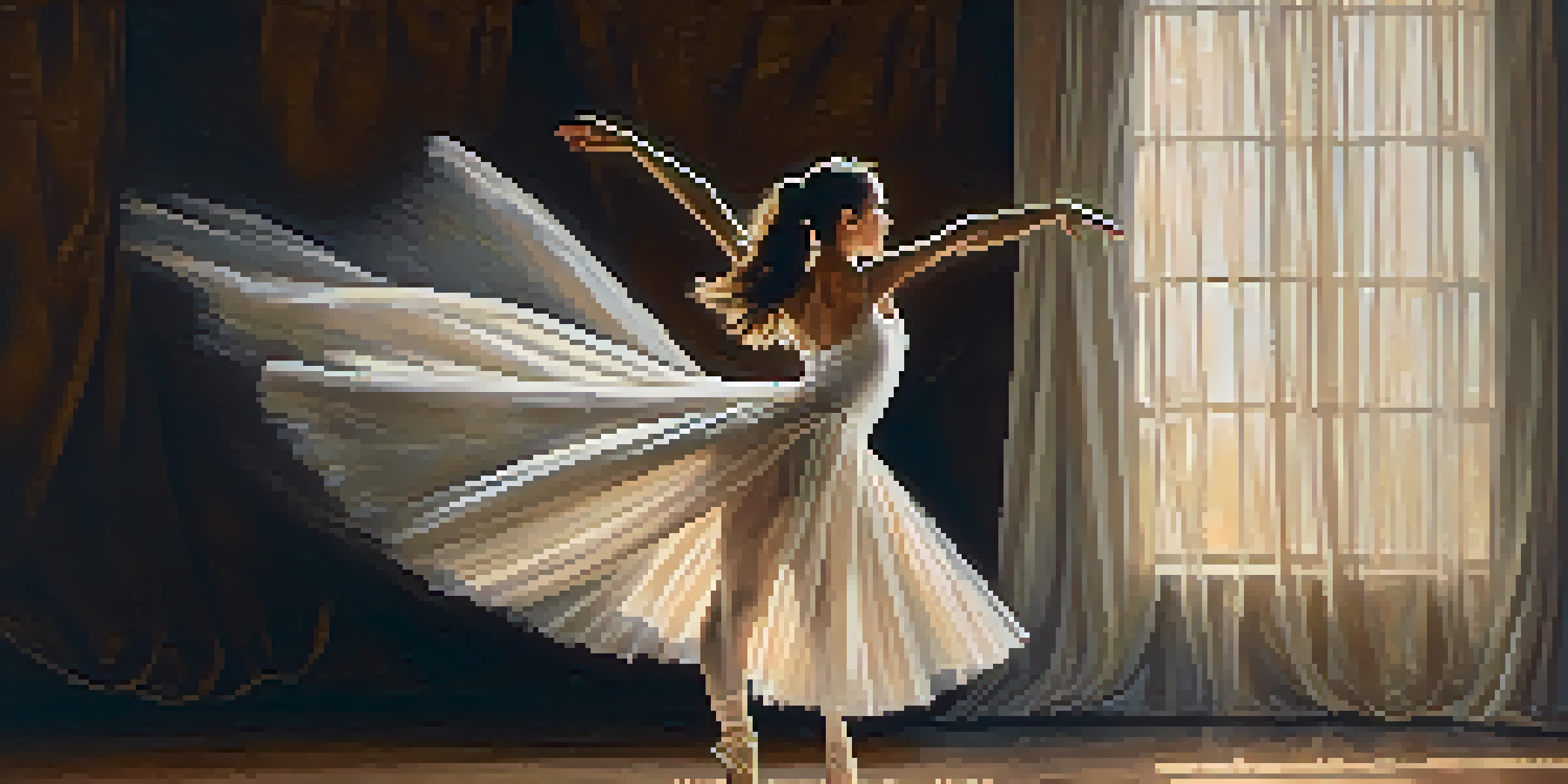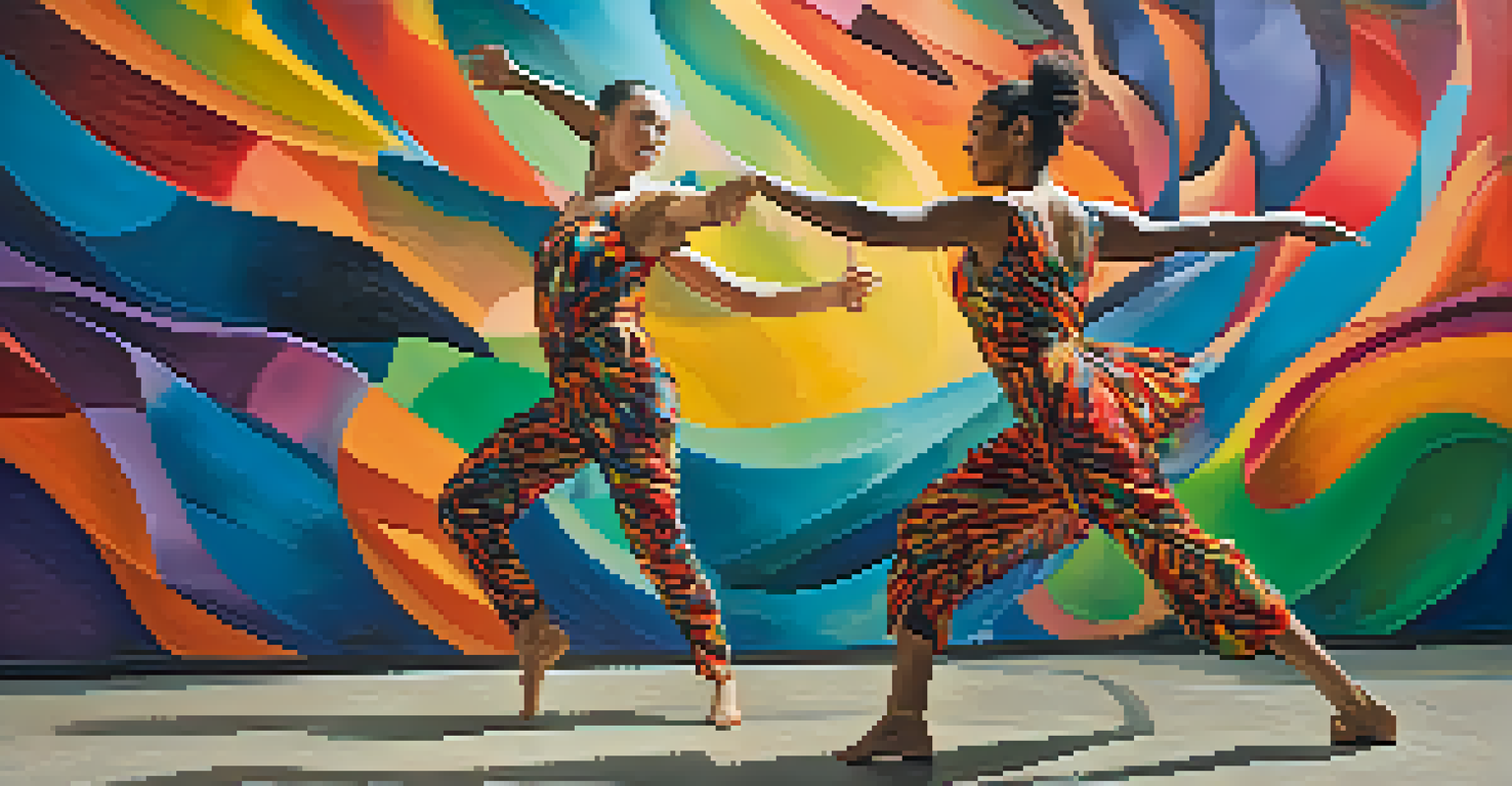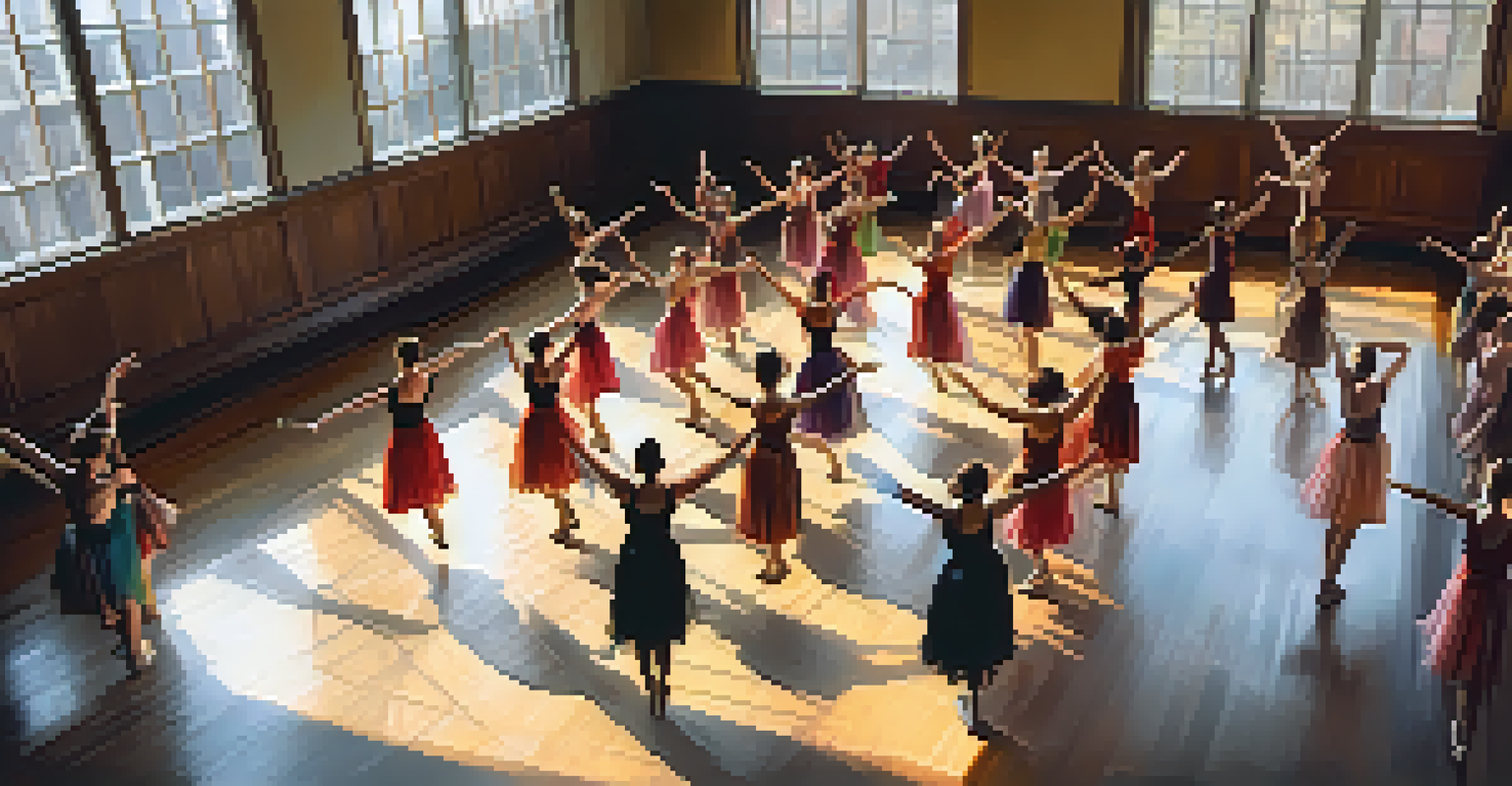The Art of Storytelling: Dance Narratives Without Words

Understanding the Essence of Dance as Storytelling
Dance is more than just movement; it's a powerful form of storytelling that transcends language. Through gestures, expressions, and rhythms, dancers embody emotions and narratives that resonate deeply with audiences. Just as a novel uses words to weave a tale, dance utilizes the body to create a visual narrative that can evoke joy, sorrow, or even nostalgia.
Dance is the hidden language of the soul.
Think of a classic ballet like 'Swan Lake.' The story of transformation and love is portrayed through every pirouette and leap, allowing viewers to feel the characters' struggles and triumphs without a single word spoken. This form of storytelling taps into universal human experiences, making it relatable regardless of cultural background.
Dance storytelling invites spectators to interpret movements in their own way, creating a personal connection to the performance. This subjective experience is what makes dance narratives so profound and impactful, as each audience member becomes part of the story through their interpretations.
The Role of Body Language in Dance Narratives
Body language in dance is akin to dialogue in a conversation. Every movement, from a subtle hand gesture to an expansive leap, conveys meaning and emotion. Dancers harness their bodies to express complex ideas, communicating feelings that words sometimes struggle to articulate.

For example, a simple outstretched arm can symbolize longing or reach for connection, while a quick, sharp movement might depict anger or urgency. This non-verbal communication creates a rich tapestry of emotions that audiences can engage with on a visceral level.
Dance as a Universal Language
Dance transcends language barriers, using movement to tell powerful stories that resonate with diverse audiences.
Moreover, the connection between dancers also plays a significant role in storytelling. The dynamics of their interactions—be it conflict, support, or love—enhance the narrative, allowing viewers to witness the unfolding drama through physical expression alone.
Music and Rhythm: The Soundtrack of Dance Stories
Music and rhythm serve as the heartbeat of dance narratives, setting the tone and pace for the story being told. The right soundtrack can amplify emotions, guiding the audience through the highs and lows of the narrative journey. Think of how a slow, melodic piece can evoke a sense of calm and introspection, while an upbeat tempo can inspire excitement and energy.
The dance is a poem of which each movement is a word.
Choreographers often choose music that complements the themes of their performance, creating a seamless blend of sound and movement. For instance, in contemporary dance, the use of diverse musical genres can add layers of meaning, making the narrative even more engaging.
Furthermore, the rhythm of the music influences the dancers' movements, allowing them to synchronize their expressions with the beats. This symbiotic relationship between music and dance elevates storytelling, creating a multi-sensory experience that captivates audiences.
Choreography: Crafting a Dance Narrative
Choreography is the blueprint of a dance narrative, mapping out how movements unfold to tell a story. A skilled choreographer carefully considers each step, ensuring that every gesture aligns with the overarching theme. This meticulous planning is essential for creating a cohesive narrative that resonates with viewers.
Take, for instance, a dance piece that portrays a journey of self-discovery. The choreography might start with hesitant, small movements, gradually evolving into expansive, confident expressions. This progression mirrors the character’s internal growth, allowing the audience to witness the transformation visually.
Emotions Drive Dance Narratives
At the heart of dance storytelling lies emotion, inviting audiences to connect personally with the performers' experiences.
Moreover, choreography can incorporate various styles and techniques to enrich the storytelling. By blending elements from ballet, jazz, or hip-hop, choreographers can create unique narratives that reflect diverse experiences and cultural backgrounds, making the performance all the more relatable.
Emotion: The Heart of Dance Storytelling
At the core of any compelling dance narrative lies emotion. Dancers embody feelings, drawing audiences into their world and inviting them to connect with the story on a personal level. This emotional resonance is what makes dance such a powerful medium for storytelling.
Consider a performance that explores themes of loss and grief. Through sorrowful movements and poignant expressions, the dancers convey the heaviness of their emotions, allowing viewers to empathize with their journey. This shared experience creates a bond between the audience and the performers, transforming the performance into a collective exploration of human experience.
In this way, dance becomes a vessel for emotional expression, enabling stories to be told in ways that words cannot capture. The rawness and vulnerability showcased in dance can leave a lasting impact, prompting reflection and introspection long after the curtain falls.
Cultural Influences in Dance Storytelling
Dance narratives are deeply influenced by culture, drawing from history, traditions, and societal values. Each dance style carries its own story, steeped in the cultural context from which it originates. For example, traditional folk dances often reflect the customs and celebrations of a community, showcasing their unique heritage through movement.
When dancers embody these cultural narratives, they not only share their stories but also educate audiences about their backgrounds. This cultural exchange enriches the viewing experience, allowing spectators to gain insight into different ways of life, beliefs, and traditions.
Cultural Influences Shape Dance
Dance narratives are enriched by cultural backgrounds, allowing for a shared exploration of traditions and societal values.
Furthermore, contemporary dance often blends various cultural elements, creating hybrid forms that reflect the globalized world we live in. This fusion of styles not only broadens the narrative scope but also highlights the interconnectedness of human experiences across cultures.
The Impact of Dance Storytelling on Audiences
Dance storytelling has a profound impact on audiences, eliciting emotional responses that can lead to personal reflection and growth. When viewers engage with a narrative through dance, they are often moved to reconsider their own experiences and feelings. This powerful connection can foster empathy and understanding, bridging gaps between different perspectives.
For instance, a performance highlighting themes of resilience might inspire audiences to reflect on their own challenges, motivating them to embrace their struggles. This ripple effect of storytelling extends beyond the stage, as viewers carry these messages into their daily lives.

Ultimately, dance narratives invite us to explore the complexity of the human experience, reminding us of our shared emotions. Whether it’s joy, sorrow, or hope, the stories told through dance resonate deeply, creating a lasting impact that lingers long after the lights dim.